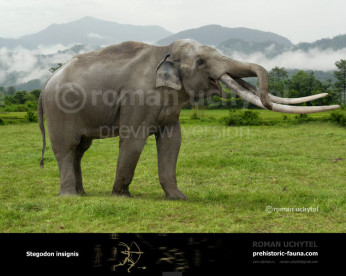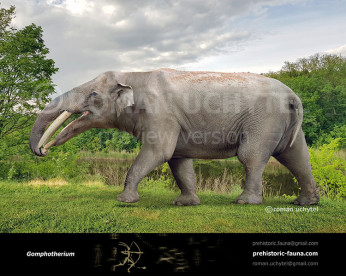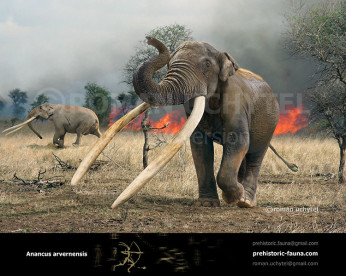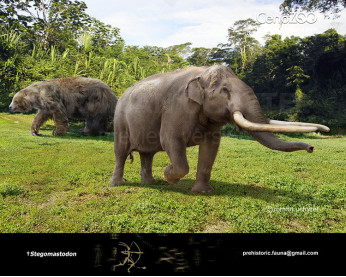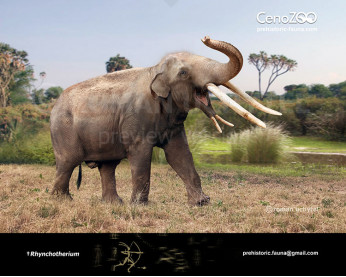Cuvieronius hyodon
153153Cuvieronius (Cuvieronius Osborn, 1923)
Order: Proboscidea
Family: †Gomphotheriidae
Dimensions: length - 5 m (with tusks), height - 2,3 m, weight - 3500 kg
Temporal range: lived during the Early Pliocene, extinction during the Late Pleistocene in North America and South America (sister genus Stegomastodon)
A typical representative: Cuvieronius hyodon Fischer, 1814
Cuvieronius is an extinct New World genus of gomphothere. It is named after the French naturalist Georges Cuvier, stood 2.3 m tall and looked like a modern elephant except for its spiral-shaped tusks. This animal initially evolved in North America ~10.3-10.2 million years ago (AEO) with fossil evidence uncovered in at the Tehuichila site in Hidalgo, Mexico. During the Great American Interchange of around 3 million years ago, Cuvieronius and two species of its sister genus Stegomastodon moved south into South America. They were the only proboscid mammals to colonize South America. living as far south as Chile with specimens unearthed at the Quereo I site (Quereo Quebrada) dating to the Late Pleistocene 11,6-11,400 years ago.
Cuvieronius (Cuvieronius Osborn, 1923)
Order: Proboscidea
Family: †Gomphotheriidae
Dimensions: length - 5 m (with tusks), height - 2,3 m, weight - 3500 kg
Temporal range: lived during the Early Pliocene, extinction during the Late Pleistocene in North America and South America (sister genus Stegomastodon)
A typical representative: Cuvieronius hyodon Fischer, 1814
Cuvieronius is an extinct New World genus of gomphothere. It is named after the French naturalist Georges Cuvier, stood 2.3 m tall and looked like a modern elephant except for its spiral-shaped tusks. This animal initially evolved in North America ~10.3-10.2 million years ago (AEO) with fossil evidence uncovered in at the Tehuichila site in Hidalgo, Mexico. During the Great American Interchange of around 3 million years ago, Cuvieronius and two species of its sister genus Stegomastodon moved south into South America. They were the only proboscid mammals to colonize South America. living as far south as Chile with specimens unearthed at the Quereo I site (Quereo Quebrada) dating to the Late Pleistocene 11,6-11,400 years ago.

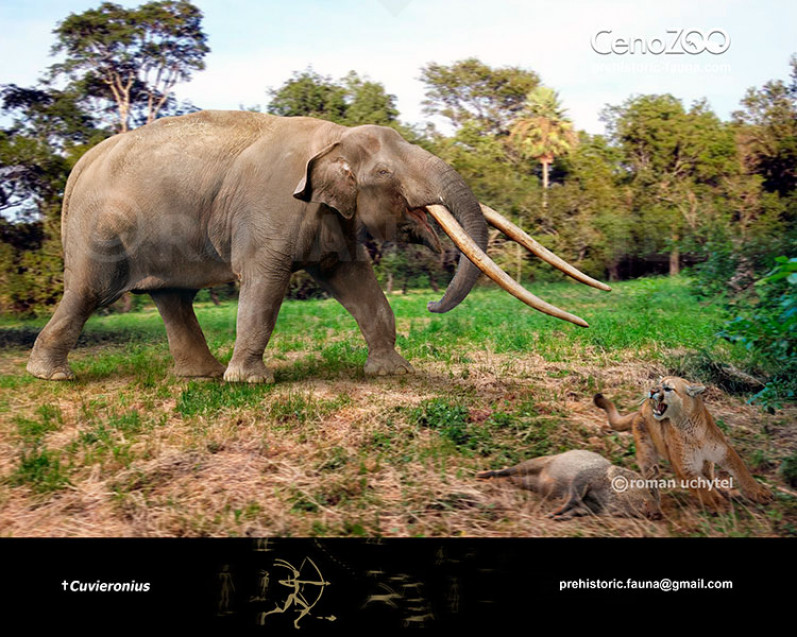
-797x638.jpg)
1-797x638.jpg)
-797x638.jpg)

-70x56.jpg)
1-70x56.jpg)
-70x56.jpg)
